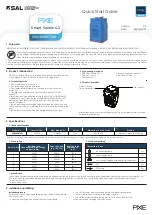
7
{
S6300-52QF.
{
S6300-42QF.
{
S6300-48S.
{
S6300-42QT.
Q.
How many PEXs can be attached to the S7500E-XS parent fabric in an IRF 3 system and what virtual chassis
numbers can the PEXs use?
A.
A maximum of 30 PEXs can be attached to the S7500E-XS parent fabric in an IRF 3 system. The virtual chassis
number must be 100 to 129.
Q.
What ports can I use as PEX physical interfaces on the S7500E-XS parent fabric in an IRF 3 system?
A.
You can use 10-GE or 40-GE fiber ports on the following expansion interface cards as PEX physical interfaces:
•
LSQM1QGS8A0.
•
LSQM1TGS24QSA0.
•
LSQM1TGS24QSM0.
•
LSQM1TGT24QSM0.
Q.
What is the maximum frame length allowed by the ports?
A.
The maximum frame length is four bytes longer than the frame length set by using the
jumboframe enable
value
command, regardless of whether they are tagged. The default value is 10004 bytes.
Q.
Does flow mirroring support mirroring outbound broadcast packets of a VLAN?
A.
No. Flow mirroring mirrors only known unicast packets of the VLAN in the outbound direction.
Q.
How can I determine whether or not packets are dropped on a port?
A.
Perform one of the following tasks:
•
Use the
display packet-drop interface
command to display the dropped packet statistics on an interface.
•
Use the
display packet-drop summary
command to display the dropped packet statistics on all interfaces.
•
Use the
display qos queue-statistics
command to display statistics collected for an interface on a per-queue
basis.
Q.
Why is the mirrored outgoing packet different from the copied packet?
A.
When the device mirrors an outgoing multicast or broadcast packet of a source port, the device mirrors the
packet before the packet is copied. When the device copies the packet, the device might change the source
MAC address and VLAN tag of the packet. As a result, the mirrored outgoing packet might be different from
the copied packet.
During a port mirroring or traffic mirroring process:
•
When the device mirrors an incoming packet of a source port, the device mirrors the packet received on the
port.
•
When the device mirrors an outgoing packet of a source port, the mirrored packet is the packet before the
device processes the VLAN tag of the packet.
































